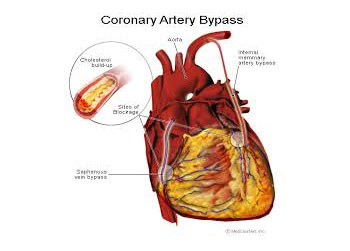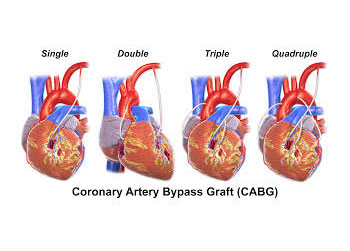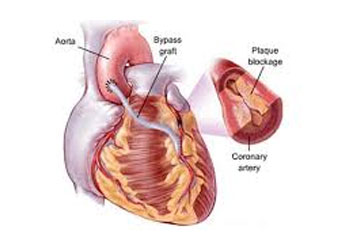The heart fails to get sufficient blood in cases where one or more coronary arteries get blocked in partial or total way. Such a condition is known as Ischemic heart disease (IHD), or Coronary artery disease (CAD) and it leads to angina or chest pain. Cardiac Bypass Surgery is done to improve the flow of the blood to the heart. The surgery diverts the blood flow around the blocked artery, this is why termed as “bypass” surgery.


There are three types of cardiac bypass surgery.
Let’s have a look at them:-Traditional Heart Bypass Surgery – Here, a 6-8 inches long cut is made to reach the heart. During this surgery, the patient is connected to a heart-lung bypass machine to help in better circulation of blood to the body.
Off-Pump Heart Bypass Surgery – This is a surgery where the heart is still beating and where doctors don’t use the heart-lung machine. Here, advanced operating equipment is used to stabilize the parts of the heart and bypass the blocked artery.
Minimally Invasive Heart Bypass Surgery – A surgery where a small cut of about 3 inches is made. The benefits of smaller scar and shorter stay at the hospital work in the favor of this surgery.
Coronary bypass surgery is recommended by doctors after finding few specific signs and symptoms. Let’s have a look at those symptoms:-


Before the surgery, the doctor gives fluids, medication, and anesthesia to the patient. Once the surgery starts, it takes 3 to 6 hours to complete. First of all, the doctor makes a cut in the middle of the chest. The heart is exposed by keeping apart the ribcage, and the procedures start.
The surgery will see the use of a heart-lung machine, and it may not be needed if there is off-pump procedure. Once the surgery is done, stitching and bandaging is done. Afterwards, the patient is taken the ICU for care. A tube in the mouth is put, and the patient may feel pain after waking up.
Doctors often keep patient in ICU for 1-2 days for monitoring purposes. Once everything is found normal, the patient can be discharged within a week.